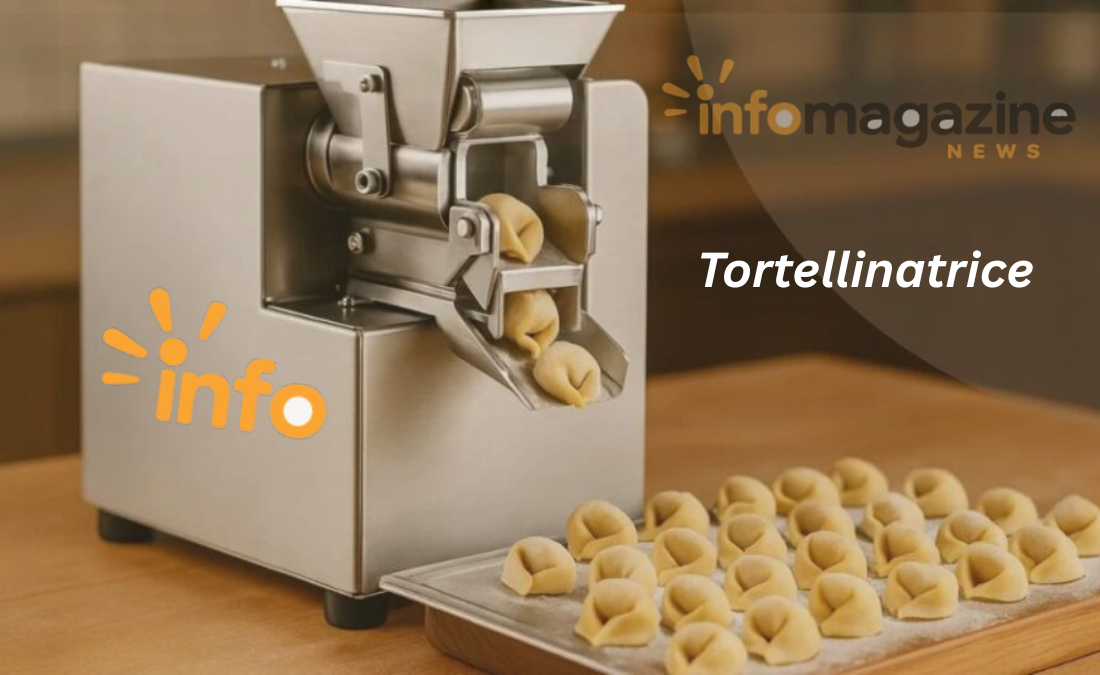Tortellini, the beloved ring-shaped pasta from the Emilia-Romagna region of Italy, has been a staple of Italian cuisine for centuries. Traditionally handmade, this delicate pasta requires precision and care. However, with modern food production demands, manual production has become inefficient for many businesses. Enter the tortellinatrice—a specialized machine designed to produce tortellini quickly, accurately, and with consistent quality. This article explores the tortellinatrice, its history, functionality, types, industrial uses, and its growing role in modern pasta production.
What is a Tortellinatrice?
This is a machine designed specifically for the automatic production of tortellini. The name is derived from the Italian word “tortellini” and the suffix “-atrice”, which denotes a machine or device. It mechanizes the once labor-intensive process of forming pasta dough into small, ring-shaped parcels typically filled with meat, cheese, or vegetables.
This is an indispensable tool in commercial pasta factories and even in some artisanal shops seeking to scale their production. It eliminates the need for manual shaping while preserving the pasta’s quality, texture, and traditional appearance.
History and Development of the Tortellinatrice
The invention of the came as a response to the increasing demand for fresh tortellini in the mid-20th century. With the rise of pasta manufacturing and the globalization of Italian cuisine, manufacturers sought ways to meet the high-volume demands without compromising the intricate shape and structure of tortellini.
Early versions of the were bulky and less precise, often producing imperfect shapes. Over time, advancements in mechanical engineering and food technology allowed for the refinement of these machines. Today’s tortellinatrici (plural for tortellinatrice) are capable of producing thousands of tortellini per hour with near-perfect uniformity.
How a Tortellinatrice Works
The working principle of a involves a series of steps that mimic the manual production process:
- Dough and Filling Preparation: The machine receives sheets of pasta dough and a filling mixture from pre-processing units.
- Sheet Feeding: The dough sheet is rolled to the correct thickness and fed into the forming section.
- Filling Injection: A precise amount of filling is deposited at calculated intervals.
- Folding and Shaping: Using specially designed molds and mechanical arms, the machine folds the dough over the filling and shapes it into a ring, forming the characteristic tortellini shape.
- Cutting and Ejection: The individual tortellini are cut and ejected onto a conveyor belt or tray for drying or packaging.
Each of these steps is controlled by programmable logic controllers (PLCs) to ensure precision, hygiene, and consistency.
Types of Tortellinatrice Machines
There are different types of machines, each catering to varying production scales and business needs:
1. Manual Tortellinatrice
These are small devices used by artisans or home chefs. They require manual input to form tortellini, often using molds and pressing tools. While not fully automated, they assist in standardizing shape and speed.
2. Semi-Automatic Tortellinatrice
These machines automate some parts of the process, such as filling and folding, but still require human oversight or intervention for feeding dough or removing finished pasta. Ideal for small restaurants or boutique pasta producers.
3. Fully Automatic Tortellinatrice
Designed for industrial use, these machines perform all steps automatically, from dough rolling to final output. High-end models can produce over 100 kg of tortellini per hour and are equipped with smart sensors and customizable settings.
4. Multi-Format Tortellinatrice
Some advanced machines can produce different pasta shapes, such as cappelletti or ravioli, by switching molds or settings. This adds versatility to the production line.

Benefits of Using a Tortellinatrice
This offers numerous benefits, especially in a commercial context:
- Efficiency: Speeds up production, allowing thousands of tortellini to be made per hour.
- Consistency: Ensures each piece is identical in size, shape, and weight.
- Labor Saving: Reduces the need for skilled manual labor, which can be costly and time-consuming.
- Hygiene: Stainless steel construction and enclosed systems ensure sanitary food processing.
- Cost-Effective: Though expensive upfront, it reduces long-term costs related to labor and waste.
- Customization: Programmable settings allow for variations in filling type, size, and pasta thickness.
Industries and Businesses That Use a Tortellinatrice
The tortellinatrice is used across various segments of the food industry:
- Pasta Factories: For large-scale production and distribution of tortellini.
- Frozen Food Producers: To supply supermarkets with frozen tortellini products.
- Catering Services: For preparing high volumes of fresh tortellini in events and buffets.
- Restaurants and Delis: Especially high-end or Italian-focused outlets use semi-automatic machines for fresh, in-house pasta.
- Export Businesses: Companies exporting Italian food products depend on consistent, scalable production made possible by tortellinatrici.
Maintenance and Hygiene of the Tortellinatrice
Maintaining a tortellinatrice is crucial to ensure longevity and food safety. Most machines are constructed from food-grade stainless steel, which resists corrosion and is easy to clean. Regular maintenance includes:
- Daily Cleaning: Removing dough and filling residues to prevent bacterial growth.
- Lubrication: Ensuring moving parts function smoothly without jamming.
- Inspection: Regularly checking for wear and tear, especially on cutting and shaping tools.
- Software Updates: In newer machines, keeping the firmware updated for performance improvements.
Key Brands and Manufacturers of Tortellinatrice
Several companies specialize in manufacturing high-quality machines. Some notable names include:
- Imperia & Monferrina – Known for durable and efficient pasta machinery.
- PAMA Roma – Offers professional machines with customizable features.
- Dominioni – High-performance machines for large-scale production.
- La Parmigiana – Offers machines that cater to artisan and industrial markets alike.
These manufacturers typically provide installation, training, and post-sales support.
The Future of the Tortellinatrice
As the food industry continues to evolve, so does the tortellinatrice. The future points toward more intelligent machines featuring:
- AI Integration: Smart sensors to monitor dough consistency, temperature, and filling quality in real time.
- IoT Connectivity: Remote monitoring and diagnostics to reduce downtime.
- Sustainability: Designs that minimize energy consumption and material waste.
- Customization on Demand: Machines that can shift pasta shapes and recipes with a simple software update.
Conclusion: The Growing Importance of the Tortellinatrice
It has revolutionized the way tortellini is produced, bridging the gap between traditional craftsmanship and modern efficiency. What once required hours of skilled labor can now be accomplished in minutes with uniformity and precision. Whether in an artisanal kitchen or a large pasta factory, the stands as a testament to the fusion of culinary heritage and technological innovation.
For businesses looking to expand their pasta offerings or increase production efficiency, investing in a could be the key to success. As global appreciation for Italian cuisine grows, so too does the relevance of the machines that make it possible. It is more than just a piece of equipment—it’s a gateway to preserving tradition while embracing progress.


